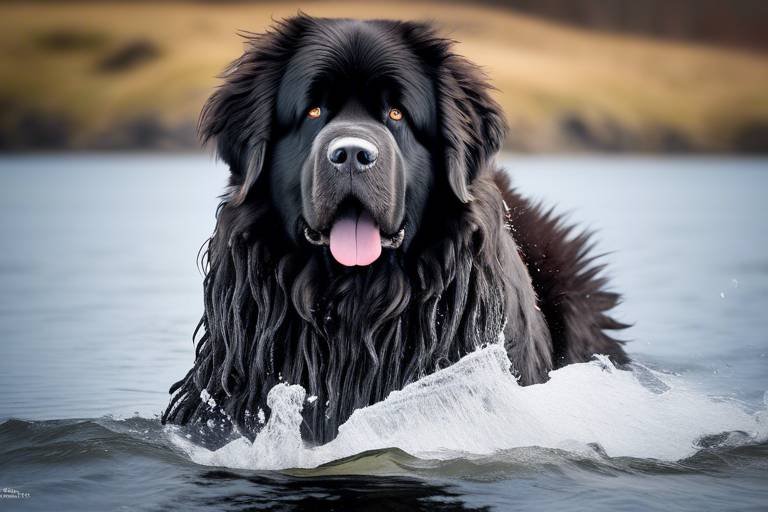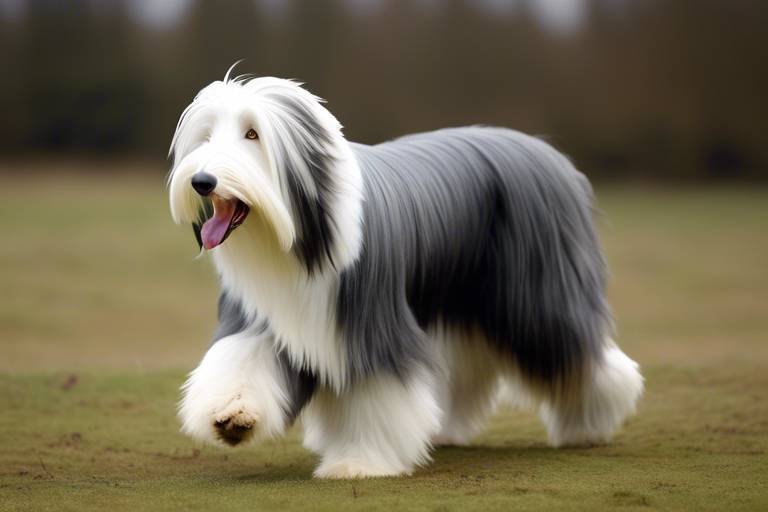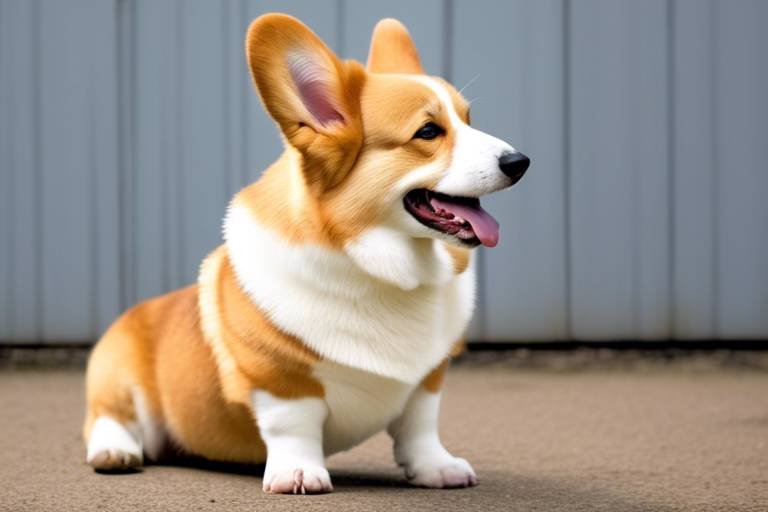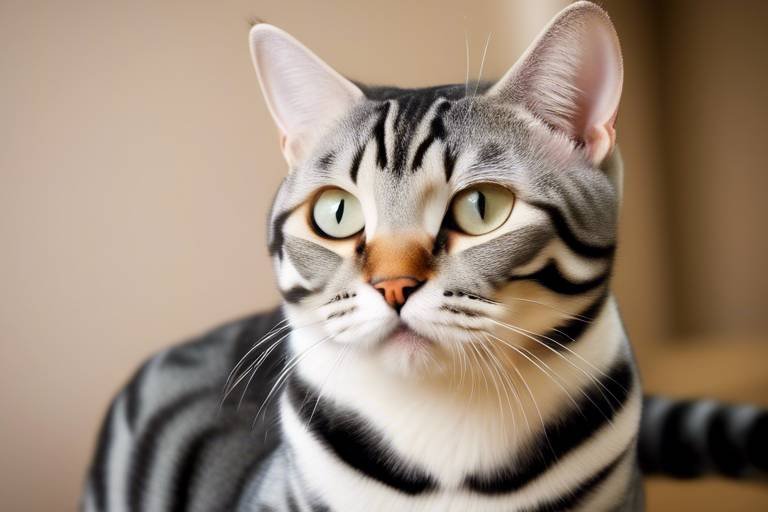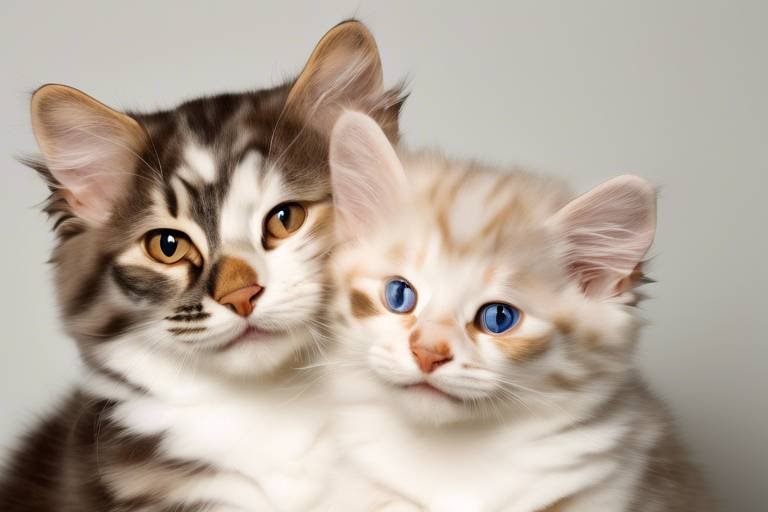The Characteristics of the Vizsla - Active and Affectionate
When you think of the perfect family dog, what comes to mind? For many, the Vizsla stands out as a top contender. This breed is not just another pretty face; they embody a unique combination of energy, affection, and intelligence that makes them truly remarkable. Whether you're an active individual or a family looking for a loyal companion, the Vizsla is ready to bring joy and excitement into your life. In this article, we dive deep into the characteristics that make the Vizsla a beloved breed, exploring their physical attributes, temperament, exercise needs, and health considerations. Get ready to discover why these dogs are cherished by so many!
Vizslas are known for their striking appearance, featuring a sleek, muscular build and a short, rust-colored coat that glistens in the sunlight. This breed's physical characteristics are not just for show; they contribute significantly to their agility and overall health. With a height ranging from 21 to 24 inches and a weight of 45 to 65 pounds, Vizslas have a well-proportioned body that is built for speed and endurance. Their long legs and strong back allow them to run swiftly, making them ideal companions for outdoor activities. Additionally, their expressive eyes and gentle features give them an endearing look that captures the hearts of many.
The Vizsla is renowned for its friendly and affectionate temperament. These dogs are social butterflies, forming strong bonds with their families and displaying loyalty that is hard to match. Their playful nature makes them excellent companions for both adults and children, ensuring that everyone in the household can enjoy their company. Imagine a dog that greets you with enthusiasm every time you walk through the door, wagging its tail like a flag in the wind—this is the Vizsla. Their affectionate demeanor means they thrive on human interaction, often seeking cuddles and attention from their owners. It's not uncommon to find a Vizsla snuggled up beside you on the couch, soaking up every ounce of love you have to offer.
When it comes to brains, Vizslas are at the top of their game. They are highly intelligent dogs that respond exceptionally well to training. Their eagerness to please makes them quick learners, but it’s essential to provide consistent guidance. Think of training a Vizsla like teaching a child; they thrive on positive reinforcement and need to understand the boundaries to channel their energy positively. Without proper training, their high energy can lead to behavioral issues, so it's crucial to engage them in regular training sessions that are both fun and rewarding.
Early socialization is crucial for Vizslas to develop into well-rounded pets. Exposing them to various environments, people, and other animals helps mitigate potential anxiety and fosters their friendly disposition. Imagine giving your Vizsla a backstage pass to the world—this exposure not only builds their confidence but also enriches their lives. The more experiences they have, the more adaptable and well-adjusted they become, making them excellent companions in any situation.
Positive reinforcement is the most effective training method for Vizslas. Rewarding good behavior with treats, praise, or playtime encourages them to learn commands quickly. Training sessions should be enjoyable for both the dog and the owner, creating a bond that strengthens their relationship. By using techniques that focus on rewards rather than punishment, you foster a trusting environment, allowing your Vizsla to thrive and grow into a well-mannered companion.
Due to their high energy levels, Vizslas require regular exercise to stay healthy and happy. Daily walks, playtime, and mental stimulation are essential to prevent boredom and destructive behavior. Think of a Vizsla as a race car; without the right fuel and a clear track, they can become restless. Engaging them in various activities—like fetching, running, or even agility training—will not only keep them physically fit but also mentally sharp. A tired Vizsla is a happy Vizsla!
Vizslas are generally healthy dogs, but like all breeds, they are prone to specific health issues. Regular veterinary check-ups and a balanced diet can help maintain their well-being and longevity. It's essential to stay informed about their health needs to ensure they live a long, happy life. Just like us, dogs need routine care to thrive.
Some common health concerns in Vizslas include hip dysplasia and certain skin conditions. Being aware of these issues allows owners to take preventive measures and seek veterinary care when necessary. Regular check-ups and open communication with your vet can help catch any potential problems early. Remember, prevention is always better than cure!
Routine veterinary visits, vaccinations, and proper nutrition are vital for maintaining a Vizsla's health. Regular exercise and mental stimulation also contribute to their overall well-being and happiness. Just like a well-oiled machine, a Vizsla requires the right care to function at its best—keeping them healthy and vibrant for years to come.
Vizslas thrive in active households and require ample space to roam and play. Understanding their needs helps create an environment that fosters their physical and emotional health, ensuring they are well-adjusted pets. They are not suited for a sedentary lifestyle, so if you're an active individual or family, a Vizsla could be the perfect fit!
An ideal home for a Vizsla includes a secure yard for play and exercise. Access to outdoor space is essential for their energetic nature, allowing them to burn off excess energy. Imagine a backyard where your Vizsla can run freely, playing fetch or simply enjoying the sunshine—this is what they crave. A home that supports their active lifestyle will lead to a happier, healthier dog.
Vizslas can adapt to various living situations, but they do best in homes where they receive plenty of attention and exercise. Their affectionate nature makes them great companions for active families. Whether you live in a house with a large yard or a cozy apartment, as long as you provide them with the love and activity they need, they will thrive.
- How much exercise does a Vizsla need?
Vizslas require at least 1-2 hours of exercise daily, including walks, playtime, and mental stimulation. - Are Vizslas good with children?
Absolutely! Vizslas are known for their friendly and playful nature, making them excellent companions for kids. - Do Vizslas shed a lot?
Vizslas have a short coat that sheds moderately. Regular brushing helps manage shedding and keeps their coat healthy. - How do I train my Vizsla?
Use positive reinforcement techniques, such as treats and praise, to encourage good behavior and make training enjoyable.
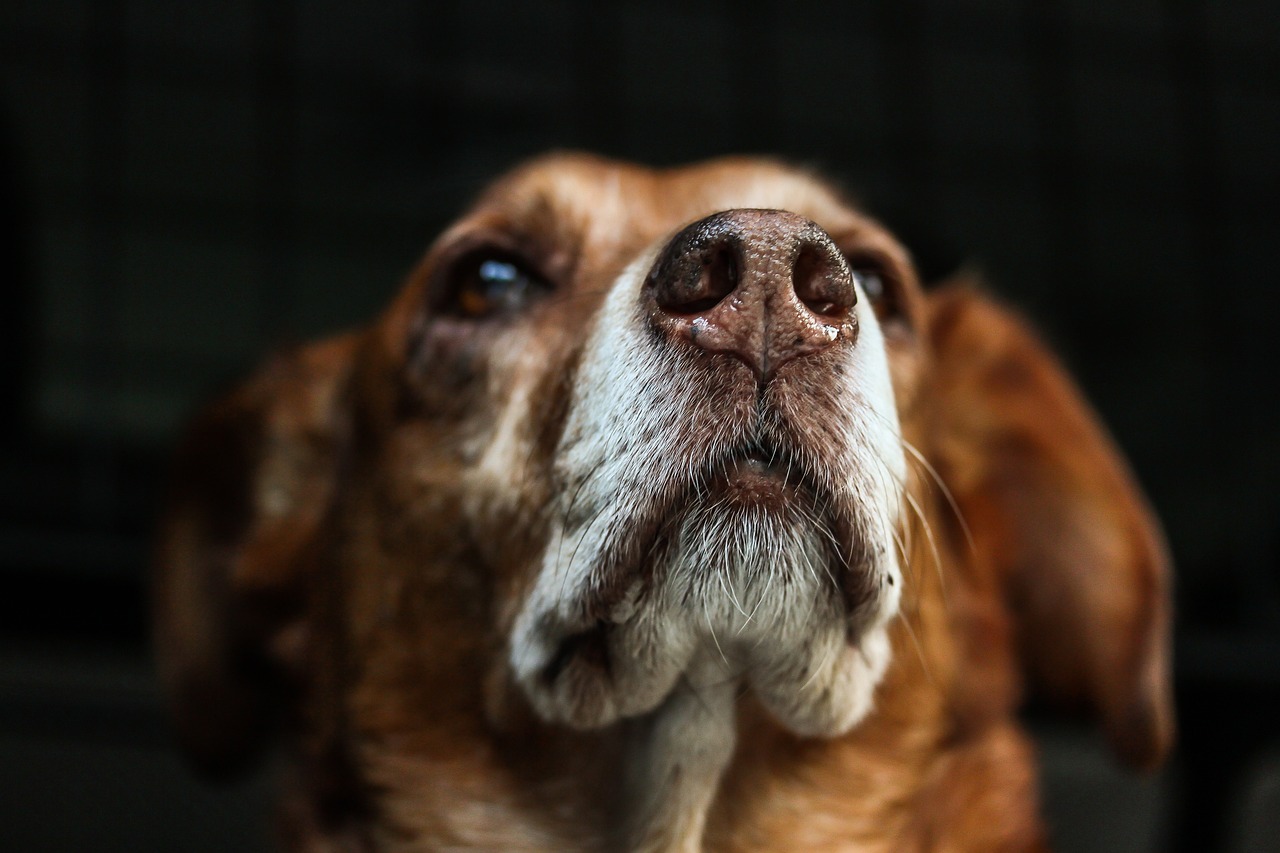
Physical Attributes
This article explores the unique traits of the Vizsla breed, highlighting their energetic nature, affectionate demeanor, and suitability as family pets. Discover what makes these dogs stand out among other breeds.
Vizslas are known for their striking appearance, featuring a sleek, muscular build that exudes both strength and elegance. Their short, rust-colored coat is not only visually appealing but also practical, requiring minimal grooming while providing adequate protection against the elements. These dogs typically stand between 21 to 24 inches tall at the shoulder, with males generally being larger than females. Weighing between 45 to 65 pounds, their athletic frame is designed for agility and endurance, making them perfect companions for active families.
One of the most captivating aspects of the Vizsla's appearance is their expressive eyes. Often described as amber or golden, these eyes reflect their friendly and intelligent nature. Their long ears hang gracefully, adding to their overall charm. When you see a Vizsla in motion, you'll notice how their well-defined muscles ripple beneath their coat, showcasing their innate athleticism. This breed is built for speed and stamina, making them exceptional running partners.
In terms of health, the physical attributes of a Vizsla contribute significantly to their overall well-being. A well-structured body not only aids in agility but also helps prevent common health issues associated with poorly built dogs. Regular exercise and a balanced diet are essential to maintain their ideal weight and muscular tone. Here’s a quick overview of their physical characteristics:
| Attribute | Description |
|---|---|
| Height | 21 to 24 inches |
| Weight | 45 to 65 pounds |
| Coat Color | Rust-colored coat |
| Life Expectancy | 10 to 14 years |
Overall, the Vizsla's physical attributes not only make them a visually stunning breed but also contribute to their functionality as active companions. Their athleticism, combined with their affectionate nature, makes them a perfect fit for families who enjoy outdoor activities and want a loyal friend by their side.
The Vizsla is renowned for its friendly and affectionate temperament. These dogs form strong bonds with their families, displaying loyalty and a playful nature that makes them excellent companions for both adults and children.
Vizslas are highly intelligent dogs that respond well to training. Their eagerness to please makes them quick learners, but they require consistent guidance to channel their energy positively and avoid behavioral issues.
Early socialization is crucial for Vizslas to develop into well-rounded pets. Exposing them to various environments, people, and other animals helps mitigate potential anxiety and fosters their friendly disposition.
Positive reinforcement is the most effective training method for Vizslas. Rewarding good behavior encourages them to learn commands quickly, making training sessions enjoyable for both the dog and the owner.
Due to their high energy levels, Vizslas require regular exercise to stay healthy and happy. Daily walks, playtime, and mental stimulation are essential to prevent boredom and destructive behavior.
Vizslas are generally healthy dogs, but they are prone to specific health issues. Regular veterinary check-ups and a balanced diet can help maintain their well-being and longevity.
Some common health concerns in Vizslas include hip dysplasia and certain skin conditions. Awareness of these issues allows owners to take preventive measures and seek veterinary care when necessary.
Routine veterinary visits, vaccinations, and proper nutrition are vital for maintaining a Vizsla's health. Regular exercise and mental stimulation also contribute to their overall well-being and happiness.
Vizslas thrive in active households and require ample space to roam and play. Understanding their needs helps create an environment that fosters their physical and emotional health, ensuring they are well-adjusted pets.
An ideal home for a Vizsla includes a secure yard for play and exercise. Access to outdoor space is essential for their energetic nature, allowing them to burn off excess energy.
Vizslas can adapt to various living situations, but they do best in homes where they receive plenty of attention and exercise. Their affectionate nature makes them great companions for active families.
- Are Vizslas good with children? Yes, Vizslas are known for their friendly and playful nature, making them great companions for kids.
- How much exercise do Vizslas need? Vizslas require at least 1-2 hours of exercise daily to stay happy and healthy.
- Do Vizslas shed a lot? Vizslas have a short coat and shed moderately, requiring minimal grooming.
- Are Vizslas easy to train? Yes, they are intelligent and eager to please, making them relatively easy to train with positive reinforcement.
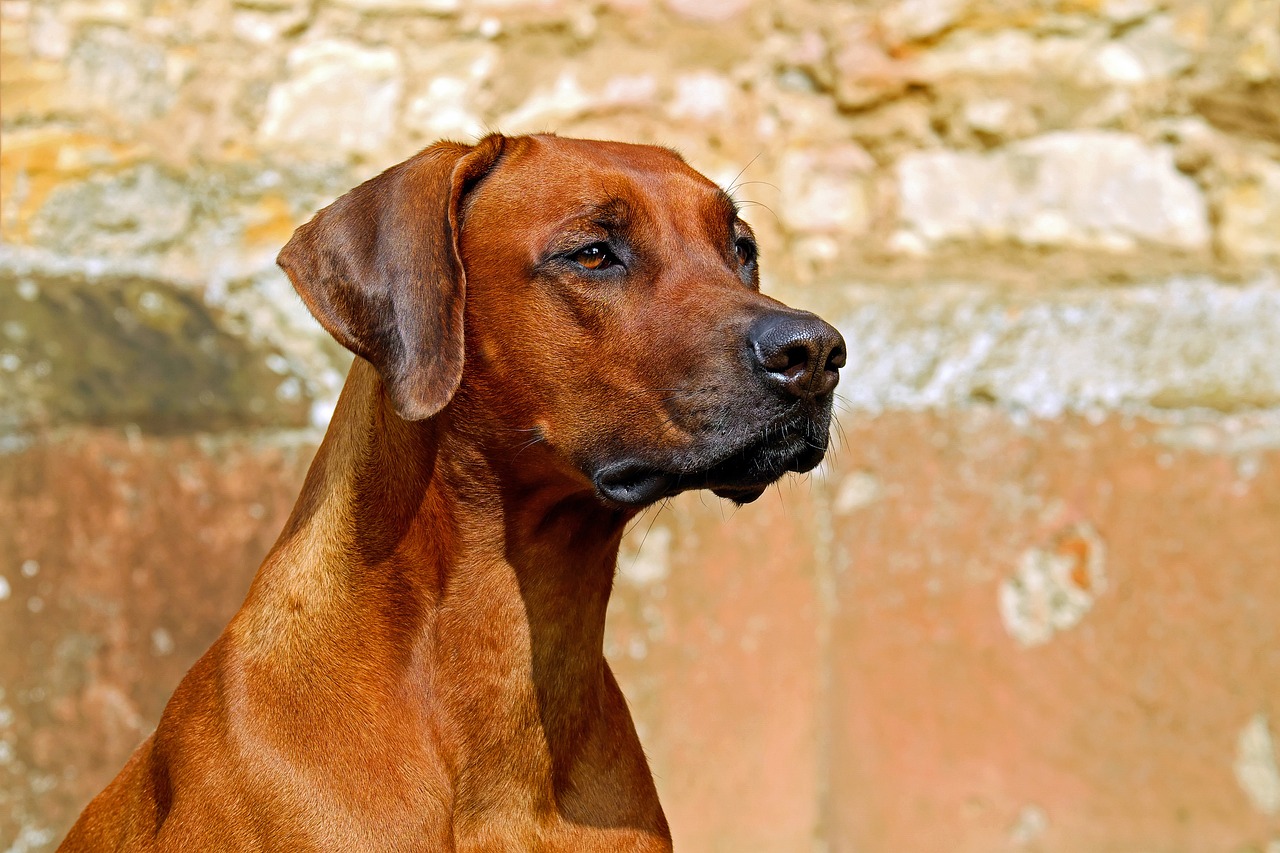
Temperament
The Vizsla is renowned for its friendly and affectionate temperament, making it a breed that captures the hearts of many. These dogs are not just pets; they become integral members of the family. With their playful nature and boundless energy, Vizslas thrive on interaction and companionship. They are known to form strong bonds with their humans, often following them around the house and seeking attention and affection. Imagine having a loyal friend who is always by your side, ready to play or cuddle—this is the essence of a Vizsla!
One of the most striking characteristics of the Vizsla is their loyalty. They are incredibly devoted to their families, often displaying protective instincts without being aggressive. This loyalty makes them excellent companions for both adults and children. Their affectionate demeanor can be likened to that of a shadow; they tend to stick close to their loved ones, which can be both heartwarming and amusing. However, this need for companionship means that they do not do well when left alone for extended periods. They can experience separation anxiety, which may lead to destructive behaviors if not properly managed.
Furthermore, Vizslas are highly social dogs that enjoy being around people and other animals. Early socialization is crucial for these dogs to develop into well-rounded pets. Exposing them to different environments, people, and animals helps mitigate potential anxiety and fosters their friendly disposition. The more experiences they have, the more confident and adaptable they become. It’s important to remember that a well-socialized Vizsla is a happy Vizsla, and happy dogs make for happy families!
In terms of their interaction with children, Vizslas are typically very gentle and playful. They have a natural affinity for kids, often engaging in games and activities that involve running and fetching. Their playful spirit can turn any ordinary day into an adventure, making them ideal companions for active families. However, it’s essential to supervise interactions between Vizslas and young children to ensure that both parties are safe and happy.
Overall, the temperament of a Vizsla is a perfect blend of affection, energy, and loyalty. They thrive on love and attention, making them one of the most sought-after breeds for families looking for a companion that is both active and affectionate. Their engaging personalities and unwavering devotion make them stand out among other breeds, ensuring that they will always hold a special place in the hearts of their owners.
- Are Vizslas good with children? Yes, Vizslas are typically very gentle and playful with children, making them great family pets.
- Do Vizslas require a lot of exercise? Absolutely! Vizslas are high-energy dogs that need regular exercise to stay healthy and happy.
- Can Vizslas be left alone for long periods? No, Vizslas do not do well when left alone for extended periods and may experience separation anxiety.
- How can I socialize my Vizsla? Early and consistent exposure to various environments, people, and other animals is key to proper socialization.
Intelligence and Trainability
The Vizsla is not just a pretty face; they are also incredibly intelligent dogs. Their sharp minds and keen instincts make them quick learners, which is a huge advantage for any dog owner. Imagine having a furry friend that seems to understand you almost intuitively! This breed thrives on mental challenges and responds exceptionally well to training. However, it's essential to remember that their intelligence comes with a need for consistent guidance and stimulation. If you don’t provide it, you might find your Vizsla turning their cleverness towards mischief.
One of the most exciting aspects of training a Vizsla is their eagerness to please. They genuinely enjoy being part of the family and want to make you happy. This trait makes them highly receptive to positive reinforcement techniques. Whether you’re teaching them basic commands or advanced tricks, rewarding good behavior with treats, praise, or playtime can lead to remarkable results. For example, when your Vizsla successfully performs a command, shower them with affection and a tasty treat. This not only reinforces the behavior but also strengthens your bond.
Despite their intelligence, Vizslas can be a bit stubborn at times, especially if they're not interested in the task at hand. To keep them engaged, it's crucial to keep training sessions short and fun. Incorporating games or activities that challenge their minds can significantly enhance their learning experience. For instance, using puzzle toys can be a fantastic way to stimulate their brain while also keeping them entertained. Remember, a bored Vizsla is a destructive Vizsla!
Moreover, socialization plays a significant role in their trainability. Early exposure to various environments, people, and other pets helps them become well-adjusted adults, which in turn makes training easier. A well-socialized Vizsla is less likely to exhibit anxiety or fear-based behaviors, making them more receptive to commands and training exercises.
To sum it up, training a Vizsla requires a mix of patience, consistency, and creativity. By understanding their unique personality and harnessing their intelligence, you can transform your Vizsla into a well-mannered companion who not only obeys commands but also enjoys the process of learning. Just like a dance, it’s all about finding the right rhythm between you and your furry partner!
- How intelligent are Vizslas compared to other breeds?
Vizslas are known for their high intelligence, often ranking among the top breeds for trainability. Their eagerness to learn makes them stand out. - What training methods work best for Vizslas?
Positive reinforcement techniques are the most effective. Using treats, praise, and play as rewards encourages them to learn quickly. - How early should I start training my Vizsla?
Start training and socialization as early as possible, ideally during puppyhood, to help them develop into well-adjusted adults. - Are Vizslas easy to train?
While they are intelligent and eager to please, they can also be stubborn. Consistency and engaging training methods are key to successful training.
Socialization Needs
Socialization is a crucial aspect of raising a well-rounded Vizsla. These dogs thrive on interaction, and exposing them to a variety of environments, people, and other animals from an early age is essential. Think of socialization as a kind of adventure for your Vizsla; the more experiences they have, the more confident and adaptable they become. Just like a child learns and grows from new experiences, your Vizsla will develop important social skills that will serve them throughout their lives.
To effectively socialize your Vizsla, consider incorporating the following activities into their routine:
- Group Classes: Enroll your Vizsla in puppy training or obedience classes. These settings provide a controlled environment to meet other dogs and people.
- Playdates: Arrange playdates with other friendly dogs. This not only helps with social skills but also allows your Vizsla to burn off some energy.
- Public Outings: Take your dog to parks, pet-friendly stores, or outdoor events. Exposure to different sights, sounds, and smells will help them become more adaptable.
- Meeting New People: Encourage friends and family to interact with your Vizsla. The more they encounter different personalities, the better they will adjust to new situations.
It's important to remember that socialization should be a positive experience. Always reward your Vizsla with treats and praise when they behave well in new situations. This will help them associate new experiences with positive outcomes, reinforcing their friendly and outgoing nature. Additionally, be mindful of your dog's body language; if they seem overwhelmed or scared, it's okay to take a step back and allow them to acclimate at their own pace. Just like a flower needs the right conditions to bloom, your Vizsla will flourish with the right socialization practices.
In summary, socialization is not just a one-time event; it’s an ongoing process that will contribute to your Vizsla’s happiness and stability. By investing time and effort into their social development, you’re ensuring that your dog becomes a well-adjusted member of your family and community.
- What age should I start socializing my Vizsla? It's best to start socializing your Vizsla as early as possible, ideally between 8 to 16 weeks of age, when they are most receptive to new experiences.
- How can I tell if my Vizsla is properly socialized? A well-socialized Vizsla will be comfortable around new people, other dogs, and various environments. They should display confidence rather than fear or aggression.
- What if my Vizsla is shy or anxious around new experiences? Gradual exposure and positive reinforcement can help. Start with less overwhelming situations and gradually introduce them to more challenging environments.
Training Techniques
When it comes to training a Vizsla, understanding their unique personality is key. These dogs are not just energetic; they are also incredibly intelligent and eager to please. This combination makes them ideal candidates for positive reinforcement training. Instead of using harsh methods, which can lead to fear and anxiety, focus on rewarding good behavior. By offering treats, praise, or playtime, you can create a fun and engaging learning environment for your Vizsla.
Consistency is another crucial factor in training. Vizslas thrive on routine, so establishing a clear set of commands and sticking to them will help your furry friend learn faster. For example, if you decide to use the command "sit," use it consistently every time you want them to sit. This repetition will help reinforce the behavior in their minds.
Incorporating a variety of training techniques can also keep your Vizsla engaged. Here are some effective methods to consider:
- Clicker Training: This method uses a small device that makes a clicking sound to mark desired behaviors. When your dog performs the desired action, you click and then reward them. This helps them associate the click with something positive.
- Obedience Classes: Enrolling your Vizsla in a professional training class can provide both socialization and structured training. These classes often cover basic commands and can help your dog learn to focus in a stimulating environment.
- Interactive Games: Training doesn’t have to be all about commands. Incorporating games like fetch or hide and seek can make learning fun. These activities not only teach your dog but also strengthen your bond.
One important aspect of training is to be patient. Some days will be more challenging than others, and it’s essential to remember that every dog learns at their own pace. If your Vizsla doesn’t get a command right away, don’t get frustrated. Instead, take a step back, and try again later. Keeping training sessions short—around 5 to 10 minutes—can help maintain their focus and enthusiasm.
Lastly, socialization plays a significant role in training. Exposing your Vizsla to different environments, people, and other animals from a young age helps them become well-adjusted adults. This exposure can reduce fear and anxiety, making training even more effective. Take your dog to parks, dog-friendly events, or simply on walks around the neighborhood to help them gain confidence.
Here are some common questions about training Vizslas:
- How long does it take to train a Vizsla? Training duration varies, but with consistency, you can expect to see progress within a few weeks.
- Are Vizslas easy to train? Yes, they are generally easy to train due to their intelligence and eagerness to please, but they do require consistent guidance.
- What is the best age to start training? It's best to start training as early as possible, ideally when they are puppies, to instill good habits.
Exercise Requirements
This article explores the unique traits of the Vizsla breed, highlighting their energetic nature, affectionate demeanor, and suitability as family pets. Discover what makes these dogs stand out among other breeds.
Vizslas are known for their striking appearance, featuring a sleek, muscular build and a short, rust-colored coat. Their physical characteristics contribute to their agility and overall health, making them ideal companions for active families.
The Vizsla is renowned for its friendly and affectionate temperament. These dogs form strong bonds with their families, displaying loyalty and a playful nature that makes them excellent companions for both adults and children.
Vizslas are highly intelligent dogs that respond well to training. Their eagerness to please makes them quick learners, but they require consistent guidance to channel their energy positively and avoid behavioral issues.
Early socialization is crucial for Vizslas to develop into well-rounded pets. Exposing them to various environments, people, and other animals helps mitigate potential anxiety and fosters their friendly disposition.
Positive reinforcement is the most effective training method for Vizslas. Rewarding good behavior encourages them to learn commands quickly, making training sessions enjoyable for both the dog and the owner.
Due to their high energy levels, Vizslas require regular exercise to stay healthy and happy. Think of them as the energizer bunnies of the dog world; they need a lot of activity to keep their spirits high and their minds sharp. Daily walks, playtime, and mental stimulation are essential to prevent boredom and destructive behavior. Ideally, a Vizsla should get at least 1 to 2 hours of exercise each day to meet their physical and mental needs.
Engaging in activities like running, hiking, or playing fetch can significantly enhance their well-being. Not only does this help them burn off energy, but it also strengthens the bond between you and your furry friend. Here are some activities that can keep your Vizsla entertained:
- Long Walks: Taking your Vizsla on long walks not only provides physical exercise but also exposes them to new sights and smells.
- Agility Training: Setting up an agility course can challenge their minds and bodies, making it a fun way to exercise.
- Fetch: A classic game of fetch is a fantastic way to let your Vizsla sprint and chase, satisfying their hunting instincts.
- Swimming: Many Vizslas love water, and swimming is an excellent low-impact exercise that helps keep them cool.
Remember, a tired Vizsla is a happy Vizsla! If they don’t get enough exercise, you might find them getting into mischief around the house, so be proactive in meeting their exercise needs.
Vizslas are generally healthy dogs, but they are prone to specific health issues. Regular veterinary check-ups and a balanced diet can help maintain their well-being and longevity.
Some common health concerns in Vizslas include hip dysplasia and certain skin conditions. Awareness of these issues allows owners to take preventive measures and seek veterinary care when necessary.
Routine veterinary visits, vaccinations, and proper nutrition are vital for maintaining a Vizsla's health. Regular exercise and mental stimulation also contribute to their overall well-being and happiness.
Vizslas thrive in active households and require ample space to roam and play. Understanding their needs helps create an environment that fosters their physical and emotional health, ensuring they are well-adjusted pets.
An ideal home for a Vizsla includes a secure yard for play and exercise. Access to outdoor space is essential for their energetic nature, allowing them to burn off excess energy.
Vizslas can adapt to various living situations, but they do best in homes where they receive plenty of attention and exercise. Their affectionate nature makes them great companions for active families.
1. How much exercise does a Vizsla need daily?
Vizslas need at least 1 to 2 hours of exercise each day to stay healthy and happy.
2. Are Vizslas good with children?
Yes, Vizslas are known for their friendly and playful nature, making them excellent companions for children.
3. Do Vizslas require special grooming?
Their short coat requires minimal grooming, but regular brushing can help reduce shedding and keep their coat healthy.
4. Can Vizslas live in apartments?
While they can adapt to apartment living, they need plenty of exercise and mental stimulation to thrive.
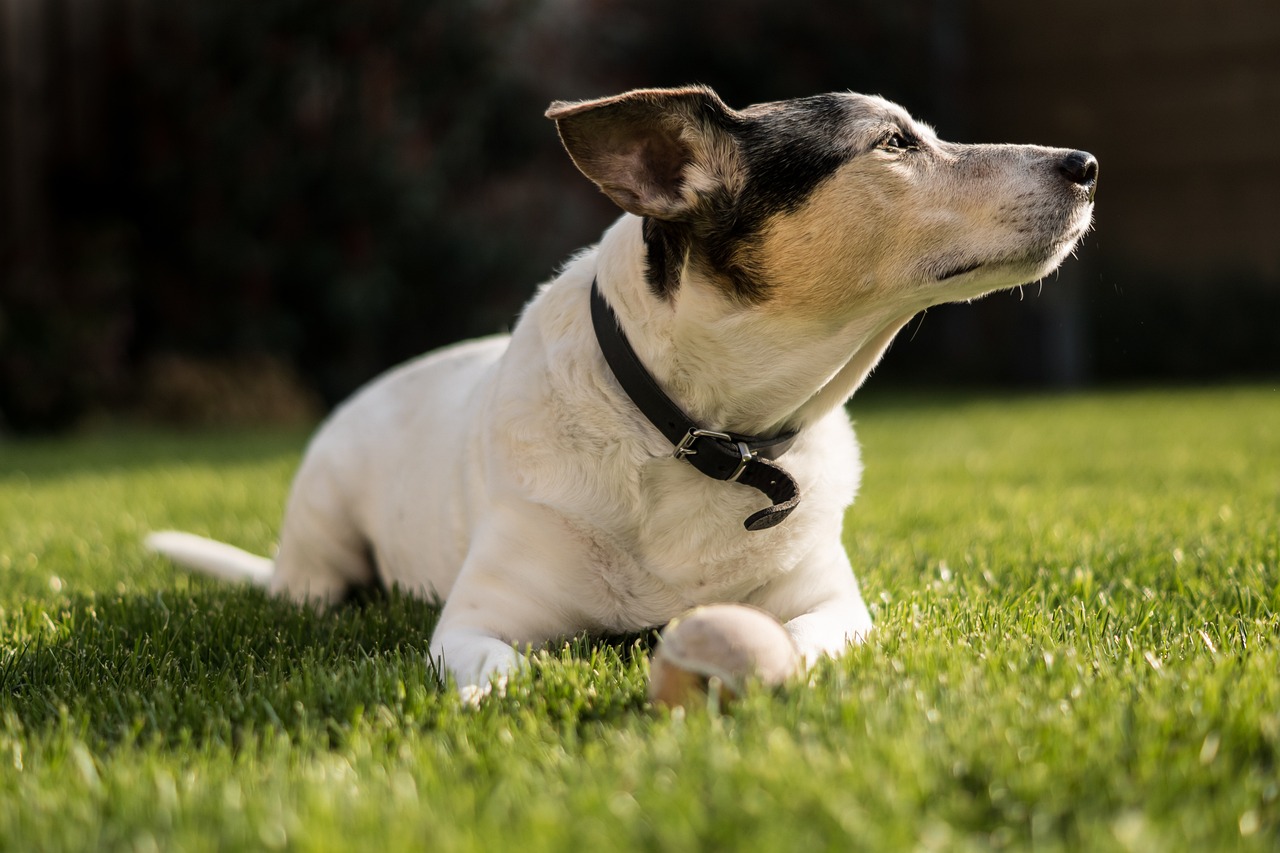
Health Considerations
When it comes to the health of your beloved Vizsla, understanding their unique needs is paramount. These dogs are generally robust and full of life, but like any breed, they come with their own set of health considerations. Regular veterinary check-ups are essential to catch any potential issues early on. A balanced diet, rich in nutrients, plays a crucial role in maintaining their overall well-being. You wouldn’t want to fuel a high-performance sports car with low-grade fuel, right? Similarly, a high-quality diet supports your Vizsla’s energetic lifestyle.
Vizslas are prone to certain health issues, which makes awareness a key factor in ensuring a long, happy life for your furry friend. Some of the common health problems include:
- Hip Dysplasia: This is a genetic condition that affects the hip joint, leading to arthritis and pain.
- Skin Conditions: Vizslas can develop allergies or skin irritations, often requiring special attention and care.
Being proactive about your Vizsla's health can make a significant difference. Regular veterinary visits not only help in monitoring their health but also in keeping their vaccinations up to date. Think of it as a routine check-up for yourself; it’s always better to catch something early than to deal with it later. Proper nutrition is another cornerstone of their health. Consult your veterinarian to find the best diet that suits your Vizsla's age, weight, and activity level.
Moreover, mental stimulation and regular exercise are just as important as physical health. A bored Vizsla can easily become a destructive one, so engaging them in activities like fetch or agility training can keep their minds sharp and bodies fit. Incorporating both physical and mental exercises into their daily routine can help prevent common behavioral issues.
To summarize, here’s a quick table of the essential health considerations for Vizslas:
| Health Aspect | Importance |
|---|---|
| Regular Vet Check-ups | Early detection of health issues |
| Balanced Diet | Supports energy and overall health |
| Exercise | Prevents boredom and destructive behavior |
| Mental Stimulation | Enhances learning and reduces anxiety |
In conclusion, caring for a Vizsla goes beyond just love and affection; it requires a commitment to their health and happiness. By being mindful of their specific needs and addressing any health concerns proactively, you can ensure that your Vizsla remains a vibrant, integral part of your family for many years to come.
1. How often should I take my Vizsla to the vet?
It's recommended to take your Vizsla for a check-up at least once a year, but more frequent visits may be necessary as they age or if health issues arise.
2. What is the best diet for a Vizsla?
A high-quality dog food that is rich in protein and low in fillers is ideal. Consult your veterinarian for specific recommendations based on your dog's age and activity level.
3. How much exercise does a Vizsla need?
Vizslas are high-energy dogs and typically require at least 1-2 hours of exercise daily, including walks, playtime, and mental stimulation.
4. Are Vizslas prone to specific health issues?
Yes, Vizslas can be prone to hip dysplasia and skin conditions, so regular check-ups and preventative care are essential.
Common Health Issues
The Vizsla is generally a robust and healthy breed, but like any dog, they can be prone to certain health issues. Understanding these common health concerns is vital for any prospective Vizsla owner, as early detection and preventive care can significantly enhance the quality of life for these affectionate companions. One of the most prevalent health issues in Vizslas is hip dysplasia. This genetic condition affects the hip joint, leading to discomfort and mobility issues. Regular check-ups with a veterinarian can help monitor your dog's hip health and catch any problems early.
Another common concern is skin conditions, which can range from allergies to infections. Vizslas have short hair, which means that any skin irritation can be easily noticeable. Owners should keep an eye out for signs of excessive scratching, redness, or hair loss. Maintaining a proper grooming routine and ensuring a balanced diet can help mitigate these issues. Additionally, it's essential to be aware of ear infections, as Vizslas have floppy ears that can trap moisture and dirt, creating an environment conducive to infections.
Here’s a brief overview of some common health issues that Vizslas may face:
| Health Issue | Description | Preventive Measures |
|---|---|---|
| Hip Dysplasia | A genetic condition affecting the hip joint, leading to pain and mobility issues. | Regular vet check-ups, maintaining a healthy weight, and joint supplements. |
| Skin Conditions | Allergies or infections that can cause discomfort and irritation. | Routine grooming, balanced diet, and monitoring for signs of irritation. |
| Ear Infections | Infections caused by trapped moisture and dirt in the ear canal. | Regular ear cleaning and monitoring for signs of infection. |
By being proactive and informed about these potential health issues, Vizsla owners can help ensure their furry friends lead happy, healthy lives. Regular veterinary visits, coupled with a keen eye for any changes in behavior or health, can make all the difference. After all, a healthy Vizsla is a happy Vizsla!
- What is the average lifespan of a Vizsla? - Vizslas typically live between 10 to 14 years, depending on genetics and care.
- Are Vizslas good with children? - Yes, Vizslas are known for their affectionate nature and generally get along well with children.
- How much exercise do Vizslas need? - They require at least an hour of exercise daily to keep them healthy and happy.
- What type of diet is best for a Vizsla? - A high-quality, balanced diet rich in proteins and essential nutrients is recommended.
Preventive Care
Taking care of a Vizsla goes beyond just feeding and walking; it involves a comprehensive approach to their health and well-being. To ensure that your furry friend enjoys a long, happy life, preventive care is essential. Regular veterinary visits are the cornerstone of preventive care. These check-ups allow your veterinarian to monitor your dog’s health, administer necessary vaccinations, and catch any potential issues before they become serious. Just like we humans go for annual check-ups, your Vizsla deserves the same attention!
Another crucial aspect of preventive care is nutrition. A well-balanced diet tailored to your Vizsla's age, weight, and activity level can significantly impact their overall health. Consult your vet to determine the best food options, and remember to avoid feeding them human food, which can lead to obesity and other health problems. Think of your Vizsla's diet as the fuel for a high-performance engine; the better the fuel, the better they run!
In addition to regular vet visits and proper nutrition, keeping your Vizsla active is vital. Regular exercise not only helps maintain a healthy weight but also keeps their muscles strong and their joints flexible. Engage your Vizsla in various activities, such as running, fetching, or even agility training. This variety not only helps burn off energy but also provides mental stimulation, which is just as important. After all, a tired dog is a happy dog!
Lastly, don't forget about dental care! Many pet owners overlook this aspect, but dental health is critical. Plaque and tartar buildup can lead to gum disease and other health issues. Incorporate dental treats and regular brushing into your Vizsla's routine to keep their teeth and gums healthy. You wouldn’t skip brushing your own teeth, right? Your Vizsla deserves the same care!
In summary, preventive care for a Vizsla encompasses:
- Regular veterinary check-ups
- Balanced nutrition
- Consistent exercise
- Dental hygiene
By following these guidelines, you can help ensure that your Vizsla remains a vibrant and joyful member of your family for years to come.
Q: How often should I take my Vizsla to the vet?
A: It's recommended to take your Vizsla for a check-up at least once a year, but more frequent visits may be necessary for older dogs or those with health concerns.
Q: What type of food should I feed my Vizsla?
A: Look for high-quality dog food that lists meat as the first ingredient. Consult your vet for specific recommendations based on your dog's age and activity level.
Q: How much exercise does a Vizsla need?
A: Vizslas are high-energy dogs that require at least 1-2 hours of exercise daily. Activities can include walks, runs, and playtime in the yard.
Q: Are Vizslas prone to any specific health issues?
A: Yes, Vizslas can be prone to hip dysplasia and certain skin conditions. Regular veterinary check-ups can help catch these issues early.
Q: How can I improve my Vizsla's dental health?
A: Incorporate dental treats, regular brushing, and vet check-ups focused on dental health to keep your Vizsla's teeth and gums in good shape.
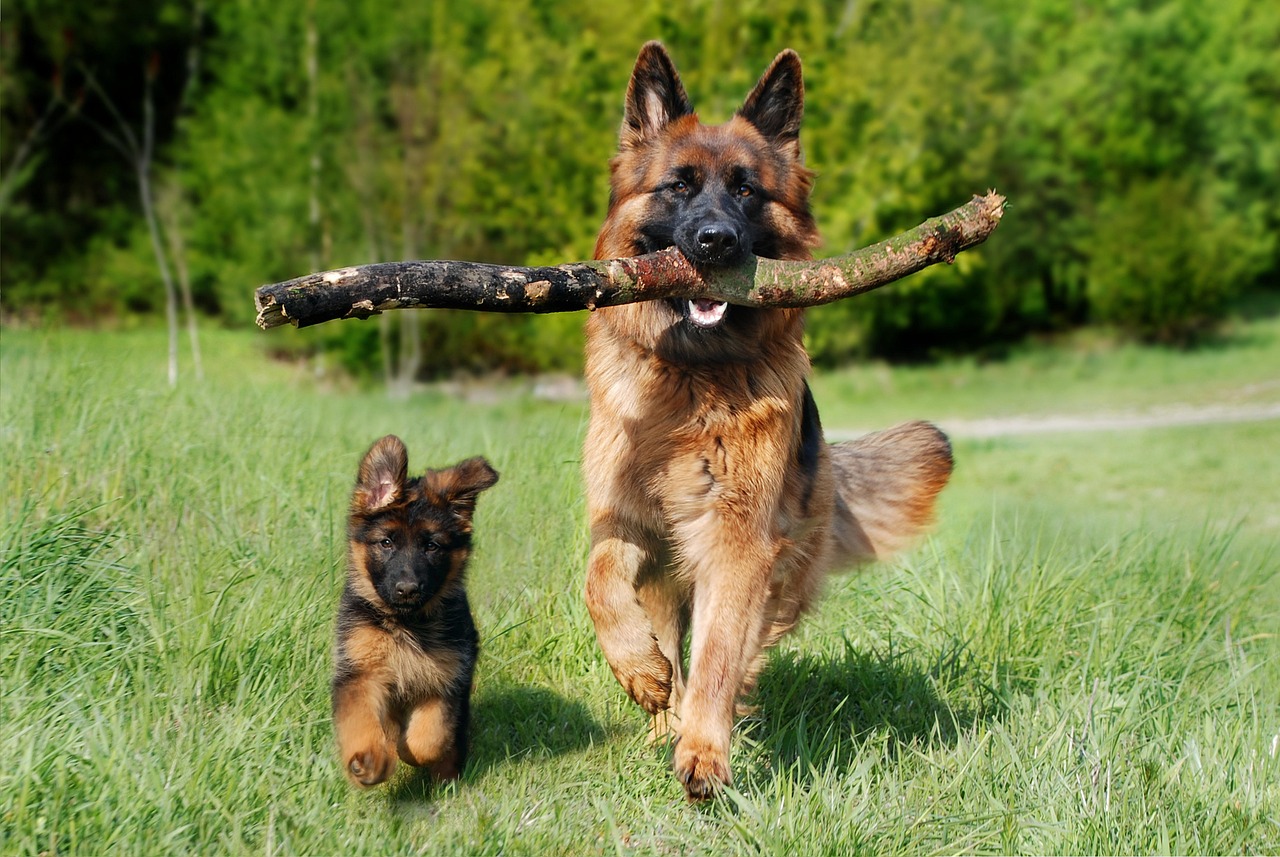
Living Environment
Vizslas are not just dogs; they are energetic companions that thrive in environments brimming with activity and love. If you’re considering welcoming a Vizsla into your home, it’s essential to understand their requirements to ensure they lead a happy and fulfilling life. These dogs flourish in active households where they can engage in play and exercise regularly. Imagine a child playing in the backyard, a Vizsla racing alongside, both full of joy and energy—this is the ideal scene for a Vizsla. They need ample space to roam freely, so a secure, fenced yard is a must-have for any potential owner.
Moreover, Vizslas are incredibly social creatures. They crave interaction not just with their human family members but also with other pets and animals. A home that encourages socialization—where visitors come and go, and other pets are present—will help them develop a well-rounded personality. Think of it as a vibrant party where everyone gets along; that’s the kind of environment that makes a Vizsla shine. However, if you live in an apartment or a smaller space, don’t fret! As long as you can provide them with sufficient exercise and mental stimulation, they can adapt. Just remember, they need daily walks and playtime to keep their spirits high.
Now, let’s talk about the climate. Vizslas have a short, rust-colored coat that offers some protection against the elements, but they are not suited for extreme weather. During hot summer days, it’s crucial to provide them with plenty of water and shade to prevent overheating. Conversely, in colder months, they might need a cozy spot indoors to keep warm. A good rule of thumb is to think of your Vizsla as a family member—if you’re comfortable in your home environment, chances are they will be too!
To summarize, here are some key aspects to consider for creating the ideal living environment for a Vizsla:
- Space: A secure yard is essential for play and exercise.
- Socialization: Regular interaction with people and other pets is vital.
- Exercise: Daily walks and mental stimulation are non-negotiable.
- Climate Consideration: Ensure they are comfortable in extreme weather conditions.
By understanding and catering to these needs, you’ll not only make your Vizsla feel at home but also foster a loving and joyful relationship that lasts a lifetime. After all, a happy Vizsla translates to a happy household!
1. Can Vizslas live in an apartment?
Yes, Vizslas can live in an apartment, but they require ample exercise and mental stimulation. Daily walks and playtime are essential to keep them happy.
2. How much exercise do Vizslas need?
Vizslas are high-energy dogs that need at least 1-2 hours of exercise each day. This can include walks, playtime, and mental challenges.
3. Are Vizslas good with children?
Absolutely! Vizslas are known for their affectionate and playful nature, making them excellent companions for children.
4. Do Vizslas shed a lot?
Vizslas have a short coat and do shed, but regular grooming can help manage this. They are considered to be average shedders.
5. What kind of training do Vizslas need?
Positive reinforcement training works best for Vizslas. They respond well to rewards and need consistent guidance to channel their energy positively.
Ideal Home Setup
Creating an for your Vizsla is crucial for their happiness and well-being. These dogs are not just pets; they are energetic companions that thrive in an environment tailored to their needs. Imagine a space that feels like a playground for your furry friend, where they can run, play, and explore. A secure yard is essential, as it allows them to engage in their natural behaviors and burn off that abundant energy. Without a yard, consider nearby parks where they can romp freely.
In addition to outdoor space, your home should be filled with interactive toys that stimulate their minds. Puzzle toys, fetch balls, and tug ropes can keep them entertained for hours. It's also important to have a designated area where they can relax after playtime. A cozy dog bed in a quiet corner will give them a sense of security and comfort. Remember, Vizslas are known for their affectionate nature, so they will want to be near you. Make sure your living room or family area has enough space for them to curl up next to you while you unwind after a long day.
Moreover, incorporating training areas into your home setup can be beneficial. A space where you can practice commands or engage in agility training will not only enhance their skills but also strengthen your bond. Regular training sessions are essential for their mental stimulation and help channel their energy positively. Consider the following elements when setting up your home for a Vizsla:
- Secure Fenced Yard: Essential for safe outdoor play.
- Interactive Toys: Keep their minds engaged.
- Cozy Resting Area: A comfortable spot for relaxation.
- Training Space: Designate an area for commands and agility.
Finally, it's worth noting that Vizslas are social animals. They thrive on companionship and love being part of family activities. Ensure your home setup allows for plenty of interaction, whether it be family game nights or outdoor adventures. By providing a nurturing environment, you are not just meeting their physical needs but also fostering their emotional health, which is vital for a happy, well-adjusted Vizsla.
Q: Do Vizslas need a lot of exercise?
A: Yes, Vizslas are high-energy dogs that require regular exercise to stay healthy and happy. Daily walks, playtime, and mental stimulation are essential.
Q: Are Vizslas good with children?
A: Absolutely! Vizslas are known for their affectionate and friendly temperament, making them excellent companions for children.
Q: How often should I train my Vizsla?
A: Regular training sessions are important. Aim for short, positive training sessions several times a week to keep them engaged and learning.
Q: Can Vizslas live in apartments?
A: While Vizslas can adapt to apartment living, they thrive best in homes with ample space to roam and play. Access to outdoor areas is crucial for their well-being.
Adaptability
When it comes to adaptability, Vizslas are like the Swiss Army knives of the dog world. These furry companions can adjust to a variety of living situations, making them a great fit for many households. Whether you live in a cozy apartment or a sprawling house with a backyard, Vizslas can find their place as long as their physical and emotional needs are met. Their affectionate nature means they thrive on human interaction, so if you're an active individual or family who enjoys spending time outdoors, a Vizsla will fit right in!
However, it's important to remember that these dogs are not just couch potatoes. They have a high energy level that needs to be channeled appropriately. This means that while they can adapt to different living environments, they will do best in homes where they receive plenty of attention and exercise. Ideally, a home with a secure yard is perfect for allowing them to burn off that excess energy. Without adequate physical activity, Vizslas can become bored, leading to behavioral issues that can be challenging to manage.
Moreover, their adaptability isn't just about space; it's also about socialization. Vizslas are naturally friendly dogs, but early exposure to various environments, people, and other animals is crucial. This socialization helps them develop into well-rounded pets who are comfortable in diverse situations. Whether it’s a trip to the dog park, a family gathering, or a weekend camping trip, a well-socialized Vizsla will be eager to join the fun!
In summary, the adaptability of a Vizsla can be broken down into a few key points:
- Living Space: They can thrive in various living situations, but need space to exercise.
- Exercise Needs: Regular physical activity is essential for their well-being.
- Socialization: Early exposure to different environments and people is critical.
In conclusion, if you're considering adding a Vizsla to your family, be ready to embrace an active lifestyle. Their adaptability makes them wonderful companions, but they will flourish in an environment that meets their energetic and social needs!
- How much exercise does a Vizsla need? Vizslas require at least 1-2 hours of exercise daily, including walks, playtime, and mental stimulation.
- Are Vizslas good with kids? Yes, Vizslas are known for their friendly and playful nature, making them excellent companions for children.
- Do Vizslas shed a lot? Vizslas have a short coat that sheds moderately, so regular brushing can help manage loose hair.
- Can Vizslas live in an apartment? Yes, but they need sufficient exercise and mental stimulation to thrive in an apartment setting.
- How do I train my Vizsla? Positive reinforcement methods work best for Vizslas, rewarding good behavior with treats and praise.
Frequently Asked Questions
- What are the exercise requirements for a Vizsla?
Vizslas are highly energetic dogs that need a significant amount of exercise to stay healthy and happy. They require at least an hour of vigorous activity each day, which can include walks, runs, and playtime. Without enough exercise, they may become bored and exhibit destructive behaviors.
- Are Vizslas good family pets?
Absolutely! Vizslas are known for their affectionate and friendly nature, making them excellent companions for families. They bond closely with their human family members and are particularly good with children, often displaying a playful and protective demeanor.
- How intelligent are Vizslas?
Vizslas are highly intelligent dogs that excel in training due to their eagerness to please. They respond well to positive reinforcement techniques, making them quick learners. However, consistent training and mental stimulation are essential to keep them engaged and prevent boredom.
- What health issues should I be aware of with Vizslas?
While Vizslas are generally healthy dogs, they can be prone to certain health issues, such as hip dysplasia and skin conditions. Regular veterinary check-ups and a balanced diet can help mitigate these risks and ensure your Vizsla remains in good health.
- How can I socialize my Vizsla effectively?
Early socialization is crucial for Vizslas. Expose them to various environments, people, and other animals from a young age. This exposure helps reduce anxiety and encourages their naturally friendly disposition, making them well-rounded pets.
- What is the best training method for a Vizsla?
The most effective training method for Vizslas is positive reinforcement. Rewarding them for good behavior with treats, praise, or playtime encourages them to learn commands quickly and makes training sessions enjoyable for both the dog and the owner.
- Can Vizslas adapt to apartment living?
While Vizslas can adapt to various living situations, they thrive best in active households with plenty of space for exercise. If living in an apartment, it's crucial to ensure they receive ample outdoor time and mental stimulation to keep them happy and healthy.
- What kind of living environment is ideal for a Vizsla?
An ideal home for a Vizsla includes a secure yard where they can run and play freely. Access to outdoor space is vital for their energetic nature, and they should be part of a family that can provide them with the attention and activity they crave.



